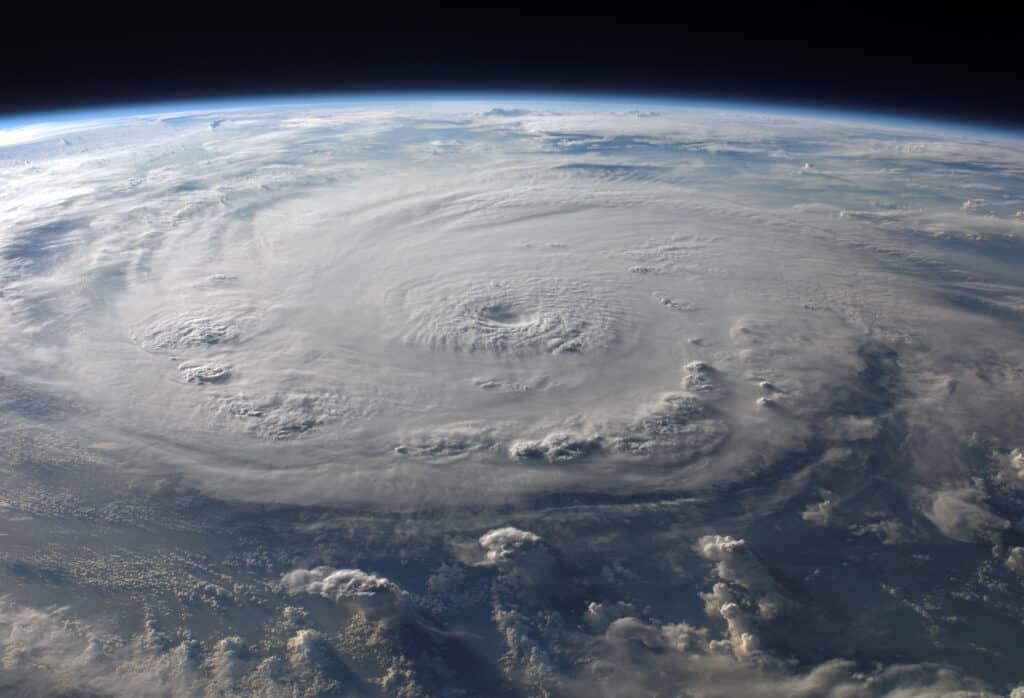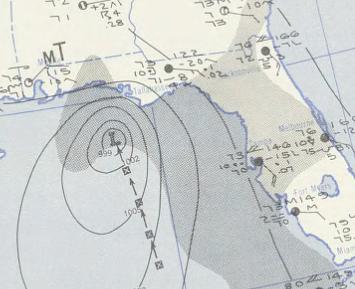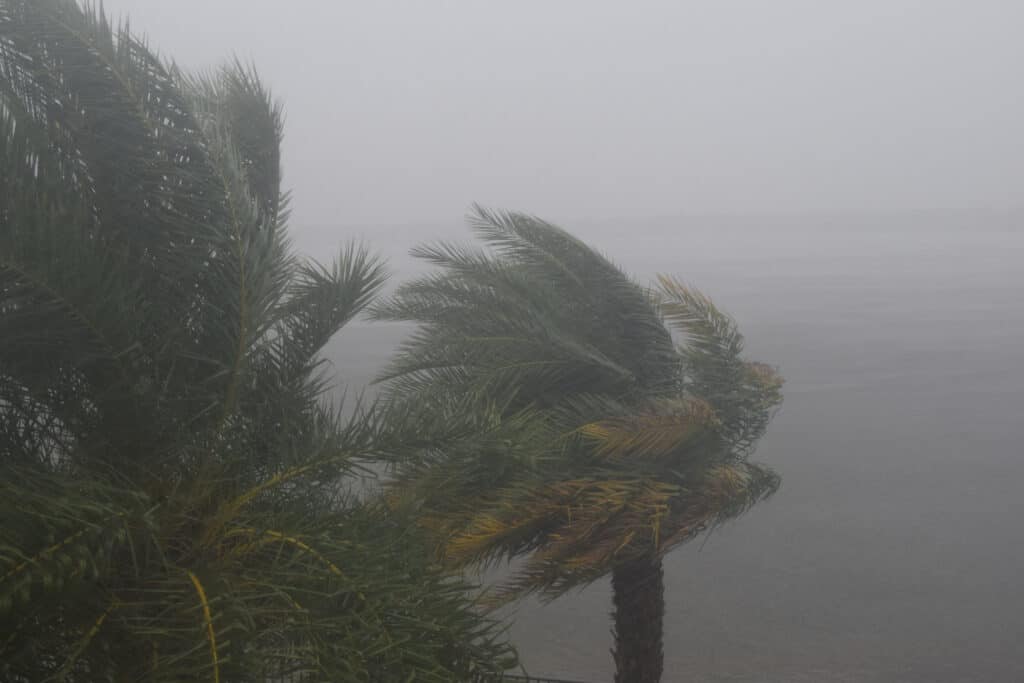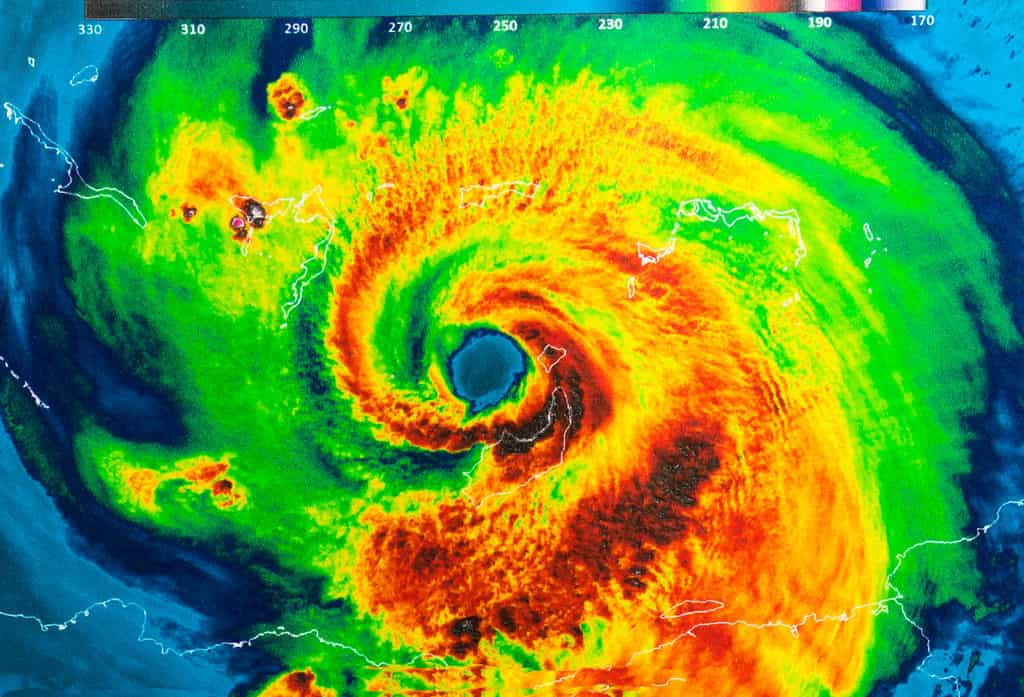The World Meteorological Organization (WMO) assembles an international committee to pick the names designated for each Atlantic hurricane season. They use a rotating list of 21 names every six years. However, they retire any name of a storm that resulted in substantial death or damage, as reusing it could be deemed insensitive to the victims and their families. For instance, the WMO has permanently retired the name “Katrina” after the devastating impact of the 2005 hurricane.
The committee used the current year’s list previously in 2017, but they retired four names after that hurricane season. The WMO has decided to replace Harvey, Irma, Maria, and Nate with Harold, Idalia, Margot, and Nigel for the 2023 list.
The WMO does not employ names starting with the letters Q, U, X, Y, and Z. They concluded that such names are not common enough and could cause comprehension issues across English, Spanish, French, and Portuguese languages.

There will never be another hurricane named Katrina. Here, you can see the massive 2005 from space.
©LiL SUS/Shutterstock.com
2023 Hurricane Names
Here is the full list of names WMO has selected for the 2023 Atlantic hurricane season:
- Arlene
- Bret
- Cindy
- Don
- Emily
- Franklin
- Gert
- Harold
- Idalia
- Jose
- Katia
- Lee
- Margot
- Nigel
- Ophelia
- Philippe
- Rina
- Sean
- Tammy
- Vince
- Whitney
When the number of tropical storms in previous seasons surpassed the number of assigned names, the Greek alphabet identified the additional storms. This happened only in 2005 and 2020. However, after the record-setting 2020 season, it became clear that applying the Greek alphabet to hurricanes was causing confusion. Now, if more than 21 tropical storms occur in a year, a supplemental list of names will be used.
History of Named Hurricanes
The modern method of naming hurricanes began in the 1950s, but the practice has a much longer history than that. Ivan Ray Tannehill, a forecaster for the United States Weather Bureau (which would become the National Weather Service), documented the history of hurricanes, including their names. For hundreds of years, hurricanes in the West Indies were named for the saint’s day when the hurricane hit. For example, Hurricane Santa Ana hit Puerto Rico on July 26, 1825. San Felipe (the first) and San Felipe (the second) made landfall in Puerto Rico on September 13 in both 1876 and 1928.
Clement Wragge, an Australian meteorologist, also began using women’s names to identify tropical storms in the late nineteenth century.
During World War II, U.S. Army and Navy meteorologists used women’s names to identify storms tracked across the Pacific Ocean.
In 1953, the United States began using female names for storms. The first tropical storm to receive a female name was Tropical Storm Alice in 1953. Alice hit Florida, Cuba, and Central America in late May and early June of that year.
In 1978, male names were added to the list of names used for Eastern North Pacific Storms. The following year, male and female names were used in naming storms in the Atlantic and the Gulf of Mexico.
The first Atlantic basin storm with a male name was Hurricane Bob, which hit the United States Gulf Coast in 1979.

Tropical Storm Alice in 1953 was the first modern storm to be named.
© – License
Why Name Hurricanes?
Until the 1950s, hurricanes were identified by their latitude and longitude. This inefficient and cumbersome method produced confusion among the general public, especially when multiple hurricanes were active at the same time. The National Hurricane Center noted that storm advisories broadcast from radio stations were sometimes mistaken for warnings concerning an entirely different storm located hundreds of miles away. Using short, distinctive names in both written and spoken communication drastically reduces this type of confusion.
If you are wondering if you can apply to have a hurricane named after you, the answer is no. WMO has a strict procedure that does not include accepting such requests.
Categorizing Tropical Weather Systems
In the western North Pacific, hurricanes are called typhoons. Similar storms in the Indian Ocean and South Pacific Ocean are called cyclones.
The National Hurricane Center uses the following criteria to categorize tropical weather systems.
- Tropical Depression: A tropical cyclone with maximum sustained winds of 38 mph (33 knots) or less.
- Tropical Storm: A tropical cyclone with maximum sustained winds of 39-73 mph (34-63 knots).
- Hurricane: A tropical cyclone with maximum sustained winds of 74 mph (64 knots) or higher.
- Major Hurricane: A tropical cyclone with maximum sustained winds of 111 mph (96 knots) or higher.

A hurricane is a tropical storm with sustained winds of 74 mph or higher.
©LouiesWorld1/Shutterstock.com
When a storm reaches hurricane level, the Saffir-Simpson Hurricane Wind Scale is used to give the storm a rating of one to five. The scale measures sustained winds in the cyclone.
- Category 1 – Sustained winds of 74-95 mph (64-82 knots)
- Category 2 – Sustained winds of 96-110 mph (83-95 knots)
- Category 3 – Sustained winds of 111-129 mph (96-112 knots)
- Category 4 – Sustained winds of 130-156 mph (113-136 knots)
- Category 5 – Sustained winds of 157 mph or higher (137 knots or higher)
It is important to note that the Saffir-Simpson Hurricane Wind Scale only focuses on sustained winds. It does not account for storm surges, flooding, tornadoes, and other dangers that can result from a hurricane.
What Storms Receive Names?
When a storm reaches the tropical storm threshold, it is assigned a name. The storm will retain that name if it strengthens into a hurricane.
Hurricane Season
The Atlantic hurricane season officially begins on June 1 and ends on November 30. Ninety-seven percent of all hurricanes occur in this six-month window. August through October is the peak season for hurricane development.
2023 Predictions
Based on data from 1991-2020, an average hurricane season produces 14 tropical storms, with seven of those storms strengthening into hurricanes.
The 2023 hurricane season is predicted to be slightly less active than normal, the first such prediction in seven years.
Meteorologists from Colorado State University released their forecast in April. They predict a total of 13 named tropical storms. Six of those storms are forecasted to become hurricanes, two of which are predicted to be major hurricanes.
Researchers from North Carolina State University also released their predictions, which are similar to those of the Colorado team. NC State meteorologists predict 11-15 named storms in the Atlantic Basin, which includes the entire Atlantic Ocean, the Caribbean Sea, and the Gulf of Mexico.
A less active hurricane season is predicted due to the expected El Niño pattern. El Niño can worsen the hurricane season in the central and eastern Pacific, but it generally means a lighter season in the Atlantic basin.
According to Climate Prediction Center, there is a 62% probability El Niño will take over between May and July, and an 80-90% chance it will form by fall.

The 2023 forecast predicts a slightly below-average hurricane season.
©Trong Nguyen/Shutterstock.com
Naming Winter Storms
Tropical storms have been named since the 1950s. Following that example, The Weather Channel began naming winter storms in 2012. The decision received mixed reviews. Some claimed it was helpful to alert the public and also to keep a record of winter storms. Others called it a marketing gimmick for the network, noting that the larger meteorological community was not consulted.
The National Weather Service does not recognize or use names for winter storms.

The National Weather Service does not recognize names for winter storms.
©justoomm/Shutterstock.com
Retired Hurricane Names
The names for Atlantic hurricane seasons have been released through 2028 with adjustments made for any retired names. After the 2023 season ends, any retired names will be replaced and the 2029 list will be published.
There have been 96 names retired since 1953. Here is the full list of retired hurricane names, along with the year of their retirement.
- Agnes 1972
- Alicia 1983
- Allen 1980
- Allison 2001
- Andrew 1992
- Anita 1977
- Audrey 1957
- Betsy 1965
- Beulah 1967
- Bob 1991
- Camille 1969
- Carla 1961
- Carmen 1974
- Carol 1954
- Celia 1970
- Cesar 1996
- Charley 2004
- Cleo 1964
- Connie 1955
- David 1979
- Dean 2007
- Dennis 2005
- Diana 1990
- Diane 1955
- Donna 1960
- Dora 1964
- Dorian 2019
- Edna 1954
- Elena 1985
- Eloise 1975
- Erika 2015
- Eta 2020
- Fabian 2003
- Felix 2007
- Fifi 1974
- Fiona 2022
- Flora 1963
- Florence 2018
- Floyd 1999
- Fran 1996
- Frances 2004
- Frederic 1979
- Georges 1998
- Gilbert 1988
- Gloria 1985
- Greta 1978
- Gustav 2008
- Harvey 2017
- Hattie 1961
- Hazel 1954
- Hilda 1964
- Hortense 1996
- Hugo 1989
- Ian 2022
- Ida 2021
- Igor 2010
- Ike 2008
- Inez 1966
- Ingrid 2013
- Ione 1955
- Iota 2020
- Irene 2011
- Iris 2001
- Irma 2017
- Isabel 2003
- Isidore 2002
- Ivan 2004
- Janet 1955
- Jeanne 2004
- Joan 1988
- Joaquin 2015
- Juan 2003
- Katrina 2005
- Keith 2000
- Klaus 1990
- Laura 2020
- Lenny 1999
- Lili 2002
- Luis 1995
- Maria 2017
- Marilyn 1995
- Matthew 2016
- Michael 2018
- Michelle 2001
- Mitch 1998
- Nate 2017
- Noel 2007
- Opal 1995
- Otto 2016
- Paloma 2008
- Rita 2005
- Roxanne 1995
- Sandy 2012
- Stan 2005
- Tomas 2010
- Wilma 2005

The name Andrew was retired after a catastrophic hurricane bearing that name hit Florida in 1992. One million people were evacuated and 54 died in this hurricane.
© – License
Hurricane Preparation
The U.S. Department of Homeland Security issued recommendations for creating a disaster supply kit. These are essentials that will help you endure an emergency or natural disaster, such as a hurricane.
Materials
- Battery-powered or hand crank radio and a NOAA Weather Radio with tone alert
- Flashlight
- Extra batteries
- Whistle (to signal for help)
- Plastic sheeting and duct tape (to shelter in place)
- Moist towelettes, garbage bags, and plastic ties (for personal sanitation)
- Wrench or pliers (to turn off utilities)
- Manual can opener (for food)
- Local maps
- Cell phone with chargers and a backup battery
- Fire extinguisher
- Matches in a waterproof container
- Mess kits, paper cups, plates, paper towels, and plastic utensils
- Paper and pencil
- Books, games, puzzles, or other activities for children
- Sleeping bag or warm blanket for each person
- Complete change of clothing appropriate for your climate and sturdy shoes
Sanitation and Medication
- First aid kit
- Masks (for everyone ages 2 and above to help filter contaminated air), soap, hand sanitizer, disinfecting wipes to disinfect surfaces
- Prescription medications. About half of all Americans take at least one prescription medicine every day. An emergency can make it difficult for them to refill their prescription or to find an open pharmacy. Organize and protect your prescriptions, over-the-counter drugs, and vitamins to prepare for an emergency.
- Non-prescription medications such as pain relievers, anti-diarrhea medication, antacids or laxatives
- Prescription eyeglasses and contact lens solution
- Infant formula, bottles, diapers, wipes, and diaper rash cream
- Feminine supplies and personal hygiene items
Food
- Water (one gallon per person per day for several days, for drinking and sanitation)
- Food (at least a several-day supply of non-perishable food)
- Pet food and extra water for your pet
Documents
- Cash or traveler’s checks
- Important family documents such as copies of insurance policies, identification and bank account records saved electronically or in a waterproof, portable container
Summary of the 21 Names Selected for the 2023 Atlantic Hurricane Season
| Number | Hurrican Name |
|---|---|
| 1 | Arlene |
| 2 | Bret |
| 3 | Cindy |
| 4 | Don |
| 5 | Emily |
| 6 | Franklin |
| 7 | Gert |
| 8 | Harold |
| 9 | Idalia |
| 10 | Jose |
| 11 | Katia |
| 12 | Lee |
| 13 | Margot |
| 14 | Nigel |
| 15 | Ophelia |
| 16 | Philippe |
| 17 | Rina |
| 18 | Sean |
| 19 | Tammy |
| 20 | Vince |
| 21 | Whitney |
The photo featured at the top of this post is © aappp/Shutterstock.com
Thank you for reading! Have some feedback for us? Contact the AZ Animals editorial team.






